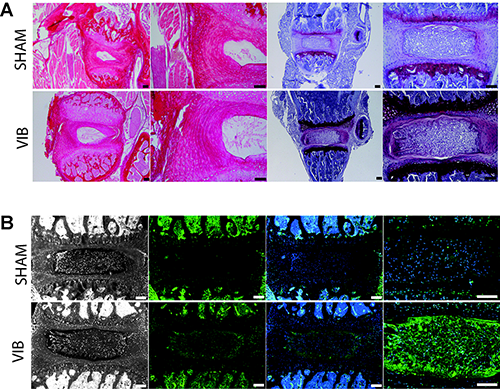Understanding the response of intervertebral disc cells to mechanical loading
The physiological function of the intervertebral disc is to anchor vertebral bodies along the spine, conferring flexibility and mechanical stability during axial compression. As with most skeletal tissues, mechanical loading contributes to homeostasis of the intervertebral disc; however, the molecular pathways that mediate the cellular response of specific cell types to physiological or pathological loading are not well understood. Our lab has initiated studies aimed at addressing this issue using both in vivo and ex vivo models. Using infrastructure established by collaborators Drs. SJ Dixon and D Holdsworth (Western), we recently conducted a series of experiments to examine the effects of whole-body vibration on intervertebral disc health. Our first study demonstrated that a single exposure of mice to vibration protocols − mimicking those used by humans in rehabilitation and fitness training − resulted in a direct anabolic response in disc tissues, marked by increased expression of matrix proteins (McCann et al, Arthritis Rheum). Given the widespread use of whole-body vibration devices, we are following up on these studies to examine the effects of repeated exposure to vibration on multiple skeletal tissues, including intervertebral disc, bone, articular cartilage. These studies highlight an intriguing dichotomy in the response of skeletal tissues to mechanical stimulation; the underlying cellular mechanisms are now being explored using in vitro mechanical stimulation of specific cell types.










